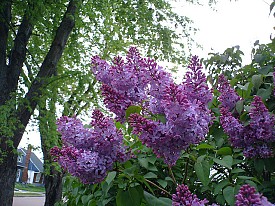8 Beloved Flowers for Every Soil Type
 Flowers grew everywhere when I was a child. My late grandmother lived in the country surrounded by a wild profusion of flowering plants. And my mother loved to garden (still does, as a matter of fact!). Although we moved often, she rose to the occasion again and again, landscaping glorious backyards wherever we settled. For me, the profusion of color and scent seemed to spring up as if by magic. Little did I realize the skill that was required to coax beautiful blooms from neglected backyards and depleted soil. All I knew was that I loved them all. Here are 8 of the flowers I enjoyed as a child, which thrive in various types of environments.
Flowers grew everywhere when I was a child. My late grandmother lived in the country surrounded by a wild profusion of flowering plants. And my mother loved to garden (still does, as a matter of fact!). Although we moved often, she rose to the occasion again and again, landscaping glorious backyards wherever we settled. For me, the profusion of color and scent seemed to spring up as if by magic. Little did I realize the skill that was required to coax beautiful blooms from neglected backyards and depleted soil. All I knew was that I loved them all. Here are 8 of the flowers I enjoyed as a child, which thrive in various types of environments.
A word of advice: If you are cultivating for the first time in a particular spot, or if you've had past difficulties growing flowers in your garden, you might want to have the soil tested. Contact your local university extension for this low-cost service, which will provide you with a detailed report on your soil's characteristics. This will let you know exactly what you are dealing with, and will help you choose appropriate plants for your location.
- Bleeding hearts produce lovely and rather mysterious deep pink flowers (how do they grow upside-down?), which thrive in shade. They also enjoy moist soil, which tends to predominate in shady gardens. Plant these for a splash of color among your ferns. Zones 3-9.
- Snowdrops are a fetching harbinger of spring. These dainty little white blossoms are hardy enough to poke their heads up through the late winter snow. They show their sturdiness in another way, as well -- by growing in dry shade, probably the most difficult garden type. Zones 3-9.
- Milkweed is, as the name suggests, a kind of weed, which enjoys strong sunshine. Its clusters of pink flowers are treasured by gardeners because they attract brilliant Monarch butterflies in the summer time. As kids, we loved milkweed for its bulging pods; pop one and you'll send seeds flying all over the landscape. Zones 3-8.
- Black-eyed Susans symbolize late summer, flowering from mid-August often straight through until the first frost. They boast golden petals centered around deep brown cones. Clay soil is great for these tall- stalked beauties, which can reach impressive heights of up to 4 feet. Zones 3-11.
- Wild roses are simpler in appearance, with a single ring of white or pink petals, than densely packed domesticated varieties. They are also surprisingly easy to cultivate in your garden, and do best in well-drained sandy soil. As bonuses, they offer a delightful aroma and healthful fruit. Leave rosehips to feed the birds or pick them to make tea rich in Vitamin C. Zones 3-6.
- Lilacs always amazed me when I was very small -- flowers sprouting from a tree! And not only that … the clusters of tiny mauve, white, or pink florets give off the sweetest odor you can imagine (although my youthful attempts to brew perfume from them were not a success). Lilac trees like alkaline soil. Zones 2-9.
- Foxgloves are proof that you can't have too much of a good thing. Their stalks are densely crowded with a plethora of rosy bells, and that's the secret of their charm. Honeybees think so too, so if you have acid soil, plant a few and enjoy the buzzing insect life. Zones 3-8.
- Day lilies are tall, flame orange, and elegant. Despite their glamorous appearance, they are quite happy in less-than-luxe surroundings, though. These beauties require minimal care and watering, so they can form part of the landscaping atop your -- ahem -- septic mound, where it's important not to disturb the soil. Zones 4-9.
Laura Firszt writes for networx.com.
Looking for a Pro? Call us (866) 441-6648

Landscaping Average Costs
Landscapers Experiences

“Stealth” Tree Trimming Was An Incredibly Clean Job

Fast Professional Tree Service For My Crabapple And Persimmon



